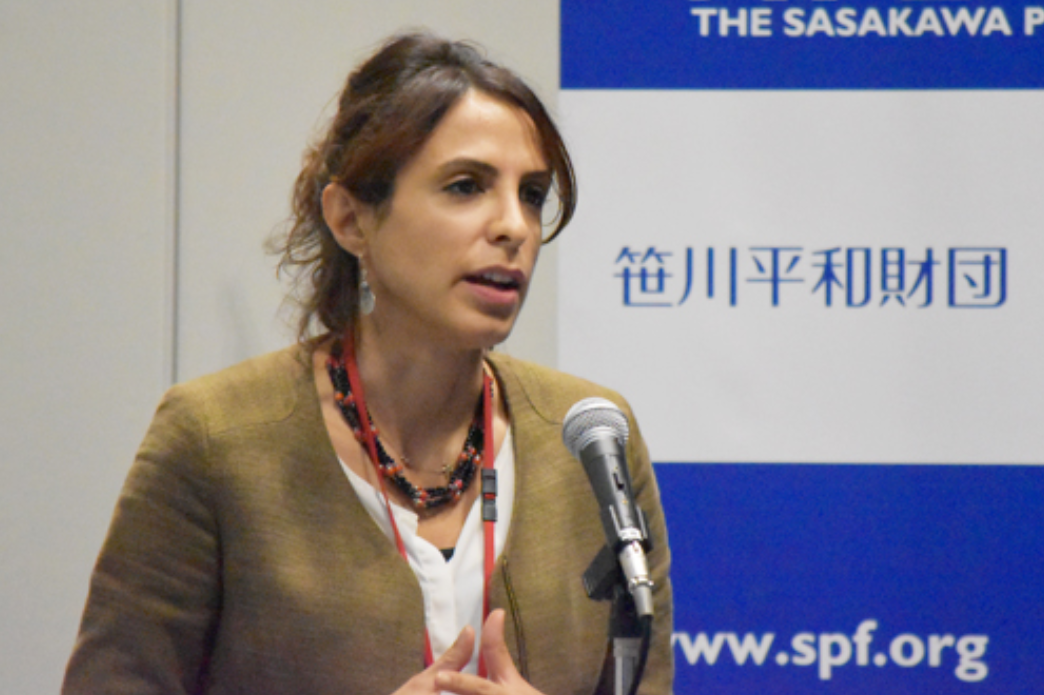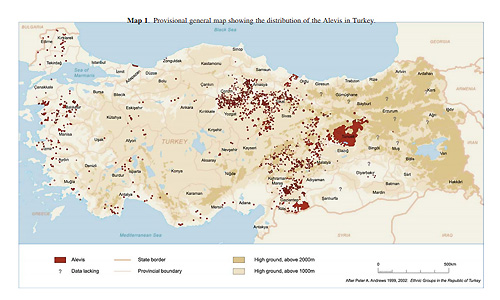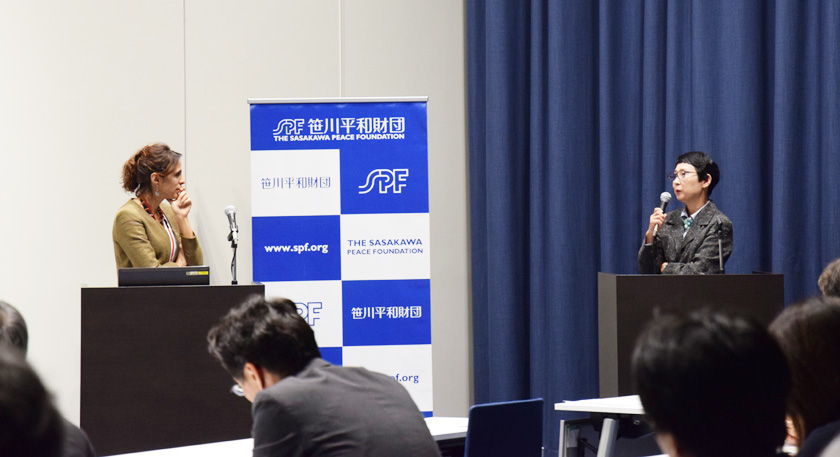In terms of how the Turkish state has treated Alevis and to show you why this AKP era after 2002 and especially after 2011 is unprecedented, I want to give you a brief idea of what happened prior to that in the early phases of the Turkish State. In terms of my first point about the embeddedness of sectarianism from the early phases of nation state building and the religious authority or the Islamic ulema in the Turkish case, in the early years of the Turkish nation state, there was, on the one hand, the process of secularization of the legal framework and the process of homogenization, which comprised elements of and promise in the theory of nonsectarian citizenship. This is very different to the case of Lebanon where sectarianism was from the start very much institutionalized. Turkey is of course considered a unique country case in that it is a Muslim majority country with a secular constitution, but of course there's no recognition of different religious or ethnic groups in Turkey by the state. On the other hand, in the Turkish case, because of the Ottoman legacy of religion becoming an important ethnic marker, this very process of nation building involved a privileging of Sunni Muslim Turkish identity and the integration of the Sunni orthodox ulema into the body of the state.
There are these two tensions and different political projects that were there from the establishment of the state, which resulted in two very broad approaches to these minorities. The first instinct or the first strategy of the state toward Alevis was to try to assimilate them, so nationalist absorption. Alevis were seen especially by parts of the military and early Turkish nationalists, presented as Turkish Islam or real pure Islam. The second strategy within the state was of the Ottoman ulema, which became the Turkish Republic's ulema, who continued to see Alevis as a heretical community and a danger to Islam. They have been the key faction within the state that have absolutely resisted the integration or assimilation even of Alevis as Turkish citizens in a sense. For example, they resisted the recognition of Alevi places of worship, which would mean that Alevis would enjoy equal access to resources of the state like mosques, and therefore they blocked the equal citizenship demands of key state organization that blocked the demands of equal citizenship by Alevi communities.
I would argue, however, that both of these strategies within the state share an overlapping consensus in really seeing the hegemonic status of Sunni Muslim Turks in the Republic and both sides see Alevis as a suspect, an internal enemy. This is why even when there is recognition by the secular-oriented state actors, like some parts of the military in previous years, Alevis continue to be seen as potential threats to the state. Against this backdrop of systematic persecution and discrimination, what has emerged since the 1990s is a sort of transnational Alevi movement with the impetus provided by the diaspora in Europe, which has been actively struggling for recognition of equal rights in Turkey, and is very active in Germany and the UK in particular.
What's happened since the Islamic AKP came to power in 2002? My argument is that this context that I've given you and the persistence of sectarian boundaries is important when we come to the AKP era for understanding why sectarianization became a viable strategy after 2011. In other words, we need to look at the historical context of nation state building to understand this new wave of sectarianization in recent years. Right from the start when AKP came to power in 2002, relations with Alevi communities were very difficult, partly because of the experience of Islamist sectarianism involvement in violence towards Alevis in previous years. However, you can still differentiate between roughly two periods since the AKP came to power.
The first period is from 2002-2011 in which the AKP continued with previous state strategies, wavering between assimilationist policies involving rearticulating Alevism in an Islamic framework or Sunni framework as we saw through the policies in 2007 when they launched a so-called Alevi opening in which they said they were going to help address demands made by Alevis, but nothing came out of this process at all. At the same time, they were periodically adopting sectarian framing of politics, but this was a bit more muted at the time.
From post-2011, there were a very clear shift in what I described as the sectarianized securitization of Alevis, so an adoption of very explicitly sectarian policies. What I mean by securitization here is that I'm using this from international relations theory to understand how states create enemies or construct security threats and then use violence in a way that invites counter violence by the securitized actors, which is meant to legitimate the initial move by the state against these securitized actors. This is really to show how you go from every day, banal sectarianism to more violent forms of sectarianism in Turkey since 2011.
This securitization as I mentioned earlier was driven really by the interplay of both domestic factors and regional politics. There was a confluence of these two things. Domestically, like in other parts of the Middle East, sectarianization was related to growing authoritarianism under the AKP. The AKP was suddenly faced with major challenges to its rule, including the 2013 Gezi Park protest and the failed coup attempt in 2016 allegedly by his former allies, the Gulenists. Like the Bahraini case, the AKP tried using sectarianization to counter a wide coalition challenging the regime. Together with this dynamic domestically, what you have is the augmentation of the sectarian nature of the state because of a massive expansion of the religious field under the AKP.
The role of the chief Islamic authority, which is called the Presidency of Religious Affairs, is massively increased in terms of the active role in social policymaking, in education, and in all fields of life in Turkey. In terms of regional politics, what we have of course is the outbreak of the Syrian conflict in 2011 and the AKP goes from being friends with Syria and with Assad to calling the Syrian Regime very explicitly the Alawaite dictatorship, emphasizing Turkey's Sunni identity. More broadly, you can see actually within the English media especially in the UK and the U.S., that the narrative of a Shia/Sunni schism is then extrapolated onto this Alevi/Sunni fault line in Turkey as if the Alevis are a part of this conflict even though they reject being categorized as Shia.
What types of state policy did this sectarianized securitization involve? Alevis began to be increasingly depicted as an internal security threat as if they were potential fifth columns of Syria, of Iran, or of so-called external forces such as Germany, which is often blamed for trying to divide Turkey in government press. There is an allegation of a sectarian affinity of the Alevis with the Assad Regime. Another strategy is the sort of alleged organic association of Alevis with terrorist groups, such as the Revolutionary People's Liberation Party, a leftist terrorist organization. You see this securitization in the government press through the images of masked men that appear after various protests and police operations in Alevi neighborhoods. Together with the securitizing discourse, sectarian policies have included using demographic engineering by placing Syrian refuges in Alevis areas in order to change the demographic maps. There is increasing discrimination in the form of reduced access to public sector jobs. There's at least anecdotal evidence that Alevis find it increasingly difficult to find jobs in the public sector, and a crackdown on Alevi movement in terms of arrests and harassment, which have all worsened since the failed coup attempt in 2016.


